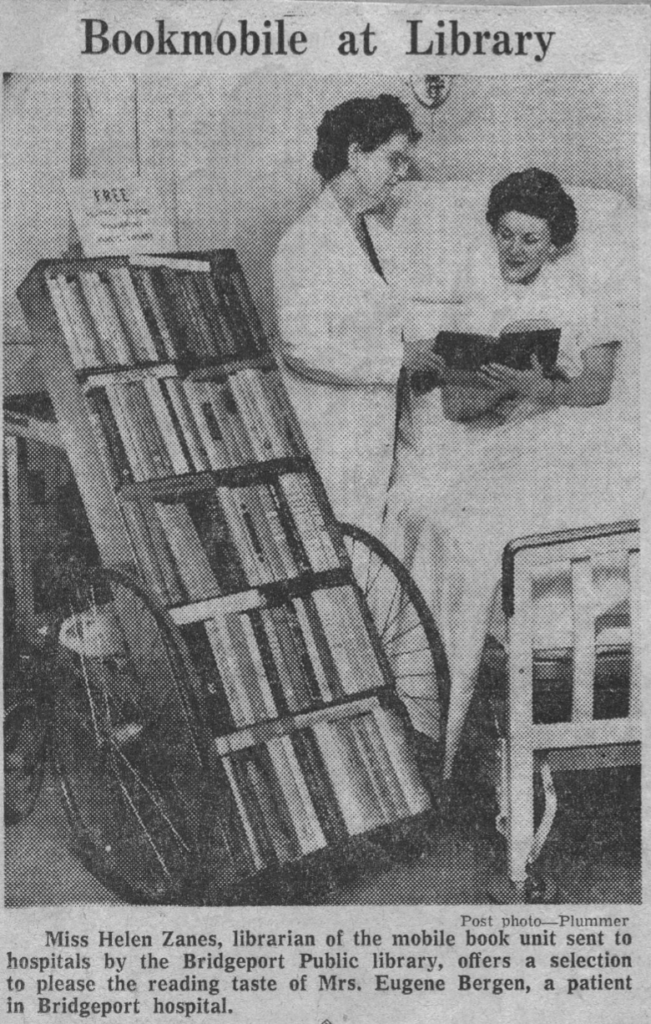 Librarians serving in the war returned to their public libraries inspired by the service they witnessed in hospitals. Many states established systems that connected public libraries with local hospitals, establishing a branch service in hospitals that allowed librarians on site to “treat” patients. Bridgeport Hospital established a similar service in the decade after the war.
Librarians serving in the war returned to their public libraries inspired by the service they witnessed in hospitals. Many states established systems that connected public libraries with local hospitals, establishing a branch service in hospitals that allowed librarians on site to “treat” patients. Bridgeport Hospital established a similar service in the decade after the war.
A librarian named Mrs. Hubbell reviewed several books a week before they could be added to the hospital library. “I am making a study to determine what books are suitable for what types of patients,” she noted in one newspaper story. Rather than allow patients to select books freely, she believed her supervision was necessary to keep patients from harming themselves with bad literary medicine. “I would rather give poison to a sick person,” Mrs. Hubbard argued, “than to give him a book I had not checked over.” She labeled each book in the hospital library using the following categories:
“Not advisable for all patients”
“Not for any patient”
“Depressing”
Librarians and physicians in hospitals in the 1920s and 1930s were experimenting with a new science called “bibliotherapy” that incorporated similar systems of labeling. Mrs. Hubbard’s successor, Julius Sohon, described the value of bibliotherapy to patients at Bridgeport Hospital:
“Of all the remedies applied to the sick man reading is the only one he accepts naturally. The thought of surgery scares him, dressings are painful and medicines bitter. The words of the chaplain recall the proximity of death. But the patient accepts this most important tool of mental therapy and absorbs its curative qualities easily and naturally. . . . Doctors in Bridgeport prescribe books as carefully as they write prescriptions, and some even wait at the bedside until the patient has been given an adequate supply of suitable reading material.”
Expanding on Mrs. Hubbard’s system of labeling, some librarians and physicians created specific forms for literary prescriptions.

Try your hand at writing your own literary prescription and see what others have prescribed.
In 1938, the Hartford Courant playfully reported on the invention of this new science called “bibliotherapy.” Unbeknownst to the reporter, Connecticut hospitals had been prescribing from their bookshelves for well over a decade. This medical innovation, so beloved by patients at Bridgeport Hospital and elsewhere across the state, was an innovation forged by the First World War.